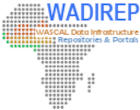Soil erosion is recognized as one main reason for soil degradation in West Africa. However, predictions on the impact of climate change on soil erosion are rare for most West African countries including Burkina Faso.
This study assesses the impact of climate change on water resources and soil erosion in a small catchment (126 km2) in southwestern Burkina Faso. Climate data from an ensemble of six regional (RCM) and global (GCM) climate models were used to run the physically based spatially distributed hydrological and soil erosion model SHETRAN. The Representative Concentration Pathways (RCPs) 4.5 and 8.5 were selected as future climate scenarios.
Bias corrected precipitation and temperature required for the calculation of potential evapotranspiration were used as input for the SHETRAN model to simulate total discharge and specific suspended sediment yield (SSY). Discharge and SSY from simulations run with climate data were able to reproduce discharge and SSY from a simulation that used observed precipitation and temperature from the historical period (1971–2000).
The impact of climate change on hydrology and soil erosion was assessed by comparing the historical period with the future climate scenarios (2021–2050). Most of the used climate models predict an increase of temperature between 0.9 °C and 2.0 °C. The bias correction did not alter the climate change signal of temperature. Large uncertainties among the RCMs-GCMs exist regarding the climate change signal of future precipitation. Some climate models predict an increased (5.9%–36.5%) others a decreased (6.4%–10.9%) or mixed signal. The applied bias correction did not reverse the climate change signal in most cases but it influenced magnitude and timing of precipitation. The ensemble mean suggests an increased discharge between 19.5% (RCP 8.5) and 36.5% (RCP4.5) and an increased SSY of the same order. In general, the climate change signal and the corresponding discharge and SSY predictions are afflicted with large uncertainties. These uncertainties impede direct conclusions regarding future development of discharge and erosion. As a consequence of the mixed signals, potential increase and decrease of future discharge and soil erosion have to be incorporated in climate change adaption strategies.
Data and Resources
| Field | Value |
|---|---|
| Groups | |
| Modified | 2025-05-27 |
| Release Date | 2019-09-11 |
| Identifier | 246ec1de-8771-4cab-a93b-39b1caafb2cd |
| Spatial / Geographical Coverage Area | POLYGON ((-3.15 11.35, -3.15 11, -2.85 11, -2.85 11.35)) |
| Covered Regions/Countries | |
| Temporal Coverage | Friday, December 15, 2017 (All day) |
| Language | English |
| Contact Name | Felix Op de Hipt |
| Contact Email |


![[Open Data]](https://assets.okfn.org/images/ok_buttons/od_80x15_blue.png)